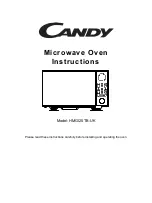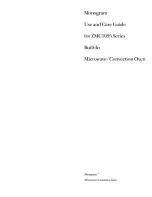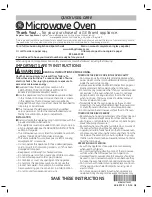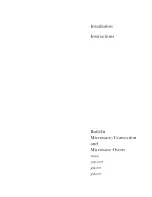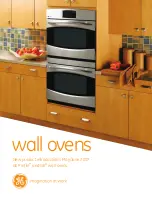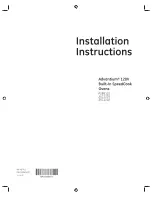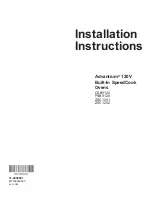
GB
27
Precautions and tips
!
This appliance has been designed and
manufactured in compliance with international safety
standards. The following warnings are provided for
safety reasons and must be read carefully.
General safety
!
The oven control panel is not a touch-pad, therefore
the buttons should be pressed lightly yet firmly to
ensure you have performed the intended operations.
The appliance was designed for domestic use
inside the home and is not intended for
commercial or industrial use.
The appliance must not be installed outdoors,
even in covered areas. It is extremely dangerous
to leave the appliance exposed to rain and
storms.
When moving or positioning the appliance, always
use the handles provided on the sides of the
oven.
Do not touch the appliance with bare feet or with
wet or damp hands and feet.
The appliance must be used by adults only for the
preparation of food, in accordance with the
instructions provided in this booklet.
Do not touch the heating elements and parts of
the oven door when the appliance is in use;
these parts become extremely hot. Keep
children well away from the appliance.
Ensure that the power supply cables of other
electrical appliances do not come into contact
with the hot parts of the oven.
The openings used for the ventilation and
dispersion of heat must never be covered.
Always grip the oven door handle in the centre:
the ends may be hot.
Always use oven gloves when placing cookware
in the oven or when removing it.
Do not use aluminium foil to line the bottom of the
oven.
Do not place flammable materials in the oven: If
the appliance is switched on accidentally, it could
catch fire.
When unplugging the appliance, always pull the
plug from the mains socket; do not pull on the
cable.
Never perform any cleaning or maintenance work
without having disconnected the appliance from
the electricity mains.
If the appliance breaks down, under no circumstances
should you attempt to perform the repairs yourself.
Repairs carried out by inexperienced persons may
cause injury or further malfunctioning of the appliance.
Contact a Service Centre (
see Assistance
).
Do not rest heavy objects on the open oven door.
Avoid accidental knocks to the handle as this
could damage the glass.
Disposal
When disposing of packaging material: observe local
legislation so that the packaging may be reused.
The European Directive 2002/96/EC relating to Waste
Electrical and Electronic Equipment (WEEE) states
that household appliances should not be disposed of
using the normal solid urban waste cycle. Exhausted
appliances should be collected separately in order to
optimise the cost of re-using and recycling the
materials inside the machine, while preventing
potential damage to the atmosphere and to public
health. The crossed-out dustbin is marked on all
products to remind the owner of their obligations
regarding separated waste collection.
Exhausted appliances may be collected by the public
waste collection service, taken to suitable collection
areas in the area or, if permitted by current national
legislation, they may be returned to the dealers as part
of an exchange deal for a new equivalent product.
All major manufacturers of household appliances
participate in the creation and organisation of
systems for the collection and disposal of old and
disused appliances.
Respecting and conserving the
environment
You can help to reduce the peak load of the electricity
supply network companies by using the oven in the
hours between late afternoon and the early hours of
the morning. The cooking mode programming
options, the delayed cooking mode (
see Cooking
modes
) and delayed automatic cleaning mode (
see
Care and Maintenance
) in particular, enable the user
to organise their time efficiently.
Always keep the oven door closed when using the
SPIT ROASTING, GRILL and ROASTING modes.
This will achieve improved results while saving
energy (approximately 10%).
Check the door seals regularly and wipe them
clean to ensure they are free of debris so that
they adhere properly to the door, thus avoiding
heat dispersion.































